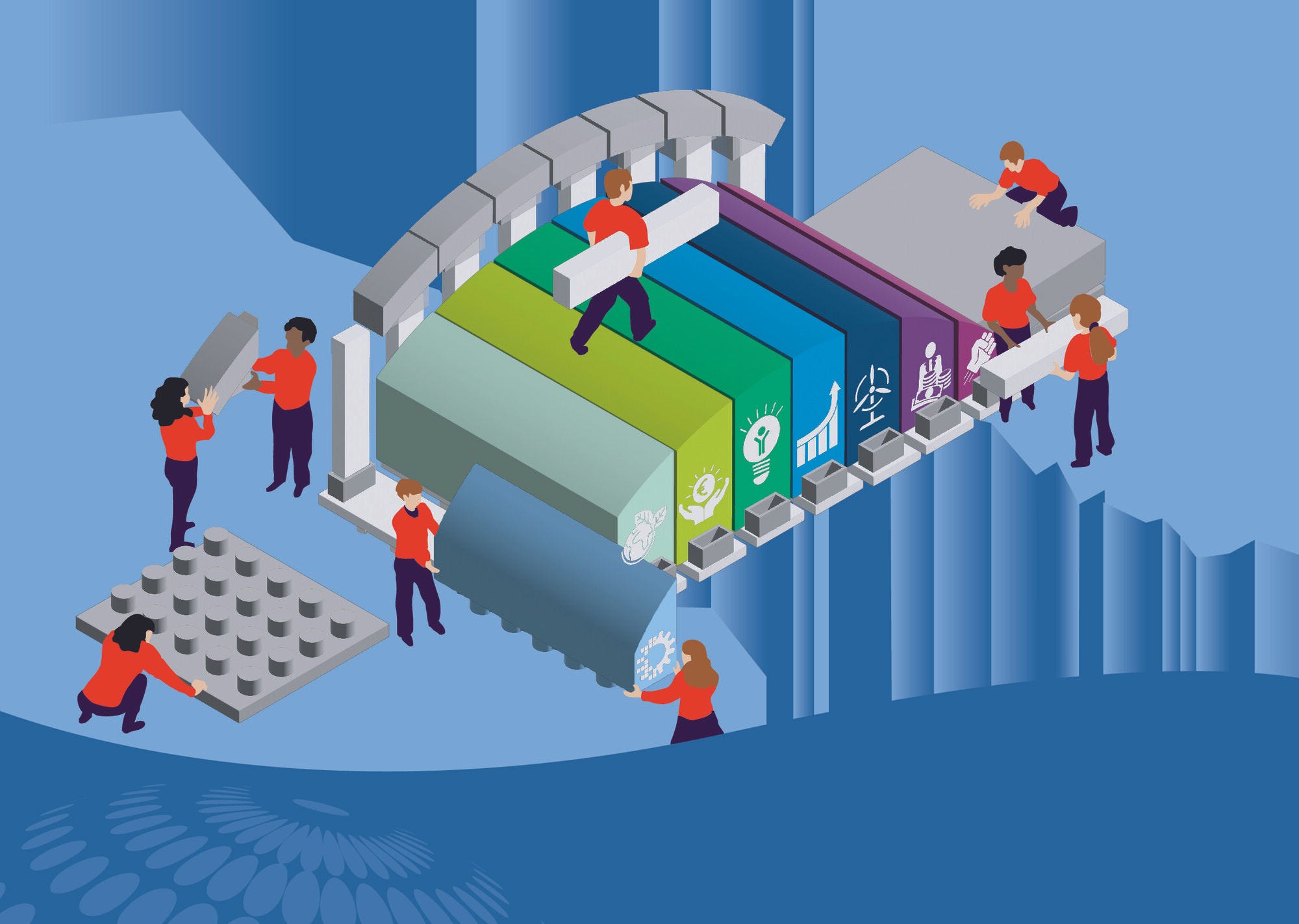Paraguay has set itself ambitious development goals for 2030. To achieve them, it will have to tackle two major challenges: buttressing sources of sustainable economic prosperity and putting the country on a more inclusive development path. Progressing towards a more inclusive society will require a broad and vigorous reform agenda. First, the country’s healthcare system requires systemic reform to widen its coverage, reduce Paraguayans’ vulnerability in the face of health risks and increase the efficiency of health service provision. Second, the social protection system needs to overcome its fragmentation and become more effective in delivering the right services and risk management tools to citizens according to their needs. In particular, the pension system requires reforms to increase its coverage and become more equitable and more sustainable. Third, the quality and the inclusiveness of its education and training system need to be strengthened to generate the skills the economy needs, and provide opportunities to all. Based on the analysis and recommendations undertaken in Volumes 1 and 2 of this Multi-dimensional country review, this report identifies key areas for action and presents targeted action plans to kick-start reform. The report also provides a dashboard of monitoring indicators to support the reform agenda in the country.
Multi-dimensional Review of Paraguay

Abstract
Executive Summary
Paraguay has experienced dynamic development since the early 2000s. Growth has been strong, supported by a solid macroeconomic policy framework, and has enabled the country to reduce extreme poverty from 12% down to 4% between 2010 and 2017. At the same time, the population’s well-being improved thanks to better access to electricity, sanitation, education and health. Nevertheless, inequality remains high and persistent and the country’s tax and benefit system only decreases inequality by 2%, a low figure by regional and OECD standards.
The country has set itself ambitious development goals: the National Development Plan, adopted in 2014, sets aims for the country to become not only more prosperous but also more inclusive, efficient and transparent by 2030. To achieve those goals, it will have to tackle two major challenges: buttressing sources of sustainable economic prosperity and putting the country on a more inclusive development path. Responding to these challenges will require a broad and vigorous reform agenda.
To put Paraguay on a more inclusive development path, the country will have to tackle three major issues. First, it must redesign its healthcare system to widen its coverage, reduce Paraguayans’ vulnerability in the face of health risks and increase the efficiency of the health system. Second, the social protection system needs to overcome its fragmentation and become more effective in delivering the right services and risk management tools to citizens according to their needs. In particular, the pension system requires reforms to increase its coverage and become more equitable and more sustainable. Third, Paraguay has to strengthen the quality and the inclusiveness of its education and training system to generate the skills the economy needs, and provide opportunities to all. By doing so, the country may break the intergenerational transmission of poverty and inequality.
Reforming the Paraguayan health system
The Paraguayan health system faces major challenges to achieve universal health coverage. It faces a double burden of disease that results from the increasing prevalence of non-communicable diseases and unresolved issues in communicable, maternal, neonatal and nutritional conditions. To respond, it needs to secure sustainable funding, ensure it is run more efficiently and strengthen its stewardship. The country has undertaken a series of reforms to modernise the system, laying the foundations for a new approach to health care provision based on primary care. However, it has not significantly altered the foundations of the health system and its fragmentation into multiple subsystems. To kick-start the necessary systemic reform, priority areas for action include:
Establishing a shared vision of the health system that overcomes the fragmentation of funding and service delivery that characterises the system today;
Securing sustainable funding for the system, by diversifying sources of funding, shifting from out-of-pocket expenditure towards mechanisms that allow for a greater share of pre-paid funds and for more pooling of funds, at least for key contingencies;
Reducing fragmentation by integrating service delivery and improving the system of payment to suppliers;
Making the public procurement of medicines and medical supplies more efficient, to reduce costs and ensure the availability and affordability of medicines and health products;
Defining a package of health benefits that the state can guarantee for all citizens and that can serve as a basis for better regulation of private providers.
Pension reform as a pillar for the overhaul of the social protection system
Paraguay has made considerable progress in reducing poverty and improving living conditions. To bolster its achievements and continue social development, the country must create a comprehensive social protection system that can improve living conditions for the most vulnerable people, help to include everyone in the country’s economic development and provide vital risk-management tools for the whole population. The country has begun implementing a social protection system with a holistic vision, which will respond to the broader governance challenges. The pension system, as the whole of the social protection system, faces challenges of coverage, funding and governance. The system has limited coverage, is highly fragmented and some of its segments are not financially sound. Priority areas for pension system reform include:
Implementing a strategy to expand coverage as part of a broader formalisation strategy. This strategy should seek to include self-employed workers and excluded categories into the general social security system and improve incentives for registering and contributing. The coverage of the social pension should also continue growing to reach its target population.
A more sustainable and fairer pension system requires parametric reforms to strengthen the link between benefits and contributions, to homogenise parameters across groups and regimes to improve equity, and to ensure the system’s financial soundness.
Moving towards a more integrated multi-pillar pension system by streamlining pension management, integrating contributory and non-contributory programmes and developing a voluntary pension savings pillar.
Establishing necessary regulation for pension providers and a supervisory body to enforce these regulations.
Reforming the education system to foster inclusion and employability
Access to education has expanded markedly in recent years, but challenges remain. First, improving coverage and completion rates, especially in pre-primary and secondary education and for certain socio-economic groups. Second, improving the quality of learning outcomes, which involves changing how teacher training and the teaching profession are managed. Third, ensuring that both general and technical training are better matched to the economy’s demand. Priority areas for action include:
Develop a national pact on education that lays the foundation for future reforms;
Expand education coverage, supporting access in remote areas and among disadvantaged people, expanding pre-primary education, and implementing policies to favour school retention;
Improve learning and the quality of education by focusing on teachers’ training and career paths and improving the measurement of outcomes and performance;
Modernise curricula based on a national qualifications framework that supports employability and a wider range of training paths;
Strengthen the technical and vocational education and training (TVET) system, establishing a government institution to co-ordinate all the stakeholders, improving quality-assurance systems and designing job-oriented training paths; and
Improving the match between supply and demand for skills by improving active labour market policies, providing better information and careers guidance for students, linking training and the production sector, and developing the system for analysing the labour market and anticipating needs.
In the same series
Related publications
-
 10 September 2022
10 September 2022










